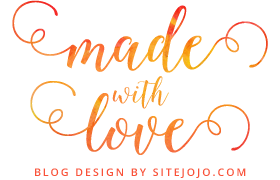Do I Need to Clearly Define My Reasons for Getting a Master's Degree in My 40s?
After going through numerous articles on the internet regarding pursuing a master's degree in one's 40s, I arrived at the following conclusion. While having a clear and specific reason for pursuing a master's degree can be beneficial, it's not always necessary to have a highly specific goal.
Common Reasons or Motivations for Getting a Master's Degree in the 40s
Personal Growth and Exploration
The decision to pursue higher education in the 40s is often rooted in
profound desire for personal growth and intellectual enrichment. If you feel that pursuing a master's degree would contribute to your personal development or open new avenues for exploration, that can be a valid reason in itself.
It's absolutely valid to express a desire for change or personal growth as a reason for pursuing further education. Some may pursue the sense of personal fulfillment and accomplishment that comes with earning a master's degree.
Embracing the Passion for Lifelong Learning
If you have the passion and curiosity to delve deeper in a particular subject, that can be a compelling reason. Academic pursuits driven by genuine interest often lead to more fulfilling experiences.
Individuals in their 40s may find themselves seeking a deeper understanding of their field or
venturing into entirely new domains. "Going back to school" may become an avenue not
just for career advancement but for the sheer joy of learning.
Navigating Career Advancement or Transitions
It's totally understandable to have a general sense that further education can enhance your career prospects. Many individuals pursue master's degrees to gain a deeper understanding of their field and improve their overall skill set.
Pursuing a master's in one's 40s, for many, is a strategic move in
their career journey. This shift may be prompted by the evolving demands of their industry or a personal aspiration to explore new professional avenues. This decision can reinvigorate one's career trajectory and provide an opportunity to stay relevant in a rapidly changing job market, thereby enhancing job security and
opening avenues for upward mobility.
Adaptability
The job market is dynamic, and having additional qualifications can make one more adaptable to changing career landscapes. Expressing a desire to remain versatile and equipped for evolving industries is a valid reason. Learning new technologies and tools can help future-proof your skill set.
Other Useful Resources
Is Getting a Master's Degree in Your 40s Right for You?
8 Advantages of Studying an Online Master's Degree
Factors to Consider When Pursuing a Master's Degree in Your 40s
Balancing Priorities
The decision to go back to school later in life comes with its set of challenges, particularly in managing existing responsibilities. If you're in your 40s, you're likely to have an established career, a family, and financial commitments.
Balancing the demands of completing assignments and a thesis or research project with these existing responsibilities requires meticulous planning and strong time-management skills.
Work-Friendly, Online Programs
Look for universities that offer programs tailored for the needs of busy, working adults with a proven track record of helping them succeed. Depending on your preference, opting for a fully (100%) online program will enable you to have the flexibility of managing both full-time work and education.
To do so, you need to stay organized and manage your time effectively by setting aside dedicated time for your studies per week.
Financial Considerations
Financial commitments are a crucial aspect to consider. If you lack the
means to fund the fees independently, explore potential solutions,
keeping in mind the availability of options at the university (public - IPTA or private - IPTS) you are
enrolling in.
The
Employees Provident Fund (EPF) or Kumpulan Wang Simpanan Pekerja (KWSP) allows its members to withdraw funds from Account 2 to help finance education at approved institutions locally or abroad.
If you're doing your master's degree in one of the public universities (IPTA) in Malaysia, you can find out more about
PTPTN Education Loan Scheme.
Or else, if the university offers scholarship options, I believe you could go for it too if you fulfill the eligibility requirements.
Final Reflections
From what I have gathered so far, deciding to pursue a master's degree in one's 40s is a deeply personal choice. It involves introspection into one's goals, a realistic assessment of the challenges, and a commitment to the journey of continued learning.
Just ensure that you've thought through your decision and have a sense of how the master's program aligns with your broader aspirations and values.



































